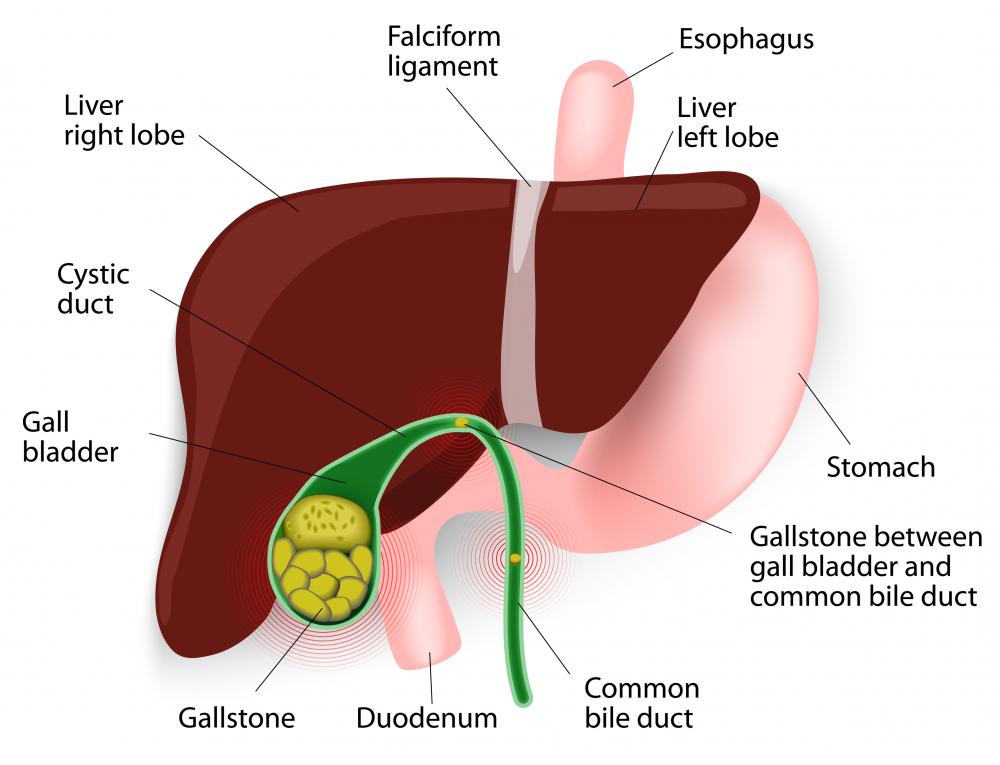At WiseGEEK, we're committed to delivering accurate, trustworthy information. Our expert-authored content is rigorously fact-checked and sourced from credible authorities. Discover how we uphold the highest standards in providing you with reliable knowledge.
What is the Cystic Duct?
The cystic duct is a small channel between the gall bladder and common bile duct. Its primary function is to transmit bile between the gall bladder and other ducts essential for digestion. It is typically located beside the cystic artery, which delivers oxygenated blood to both the cystic duct and the gall bladder.
The digestive system breaks down food with the help of bile. The cystic duct plays an important role in this process, transferring bile to and from the gall bladder and the hepatic and common bile ducts. This allows for the free flow of the vital fluid, which helps process lipids in the small intestine.

In addition to its slim, vessel-like shape, the cystic duct also has a spiral valve. The spiral valve is a system of intricate folds that rise and fall with the passage of bile. Though there is some mystery surrounding the precise function of the spiral valve, it is commonly believed that the conveyance of bile and the regulation of gall bladder size are the chief responsibilities of these surging folds.

During a cholecystectomy, commonly referred to as gallbladder removal, the cordoning of the cystic duct allows for the gall bladder to be taken out. Both the cystic artery and duct are fitted with small titanium clips before an incision is made between the clips. The gallbladder is then more easily separated from the liver and extracted.
When bile functions abnormally and is unable to break down certain fats, such as cholesterol, gall stones may develop. There are a variety of locations in the digestive system where gall stones may form, but one of the most common is in the cystic duct. If gall stones block this duct, a moderate to extreme amount of cramping usually results in the upper abdomen.

There are a number of other conditions that may develop because of a blockage of the cystic duct. Mirizzi's syndrome, for example, occurs when a gall stone obstructs this duct and becomes impacted. This leads to a swelling of the gallbladder, and infrequently, can result in the gall stone eating away into the hepatic duct.
Ampullary tumors are also related to the cystic duct. These tumors are formed in the region of the digestive system known as the ampulla of Vater, located at the joining of the pancreatic duct and common bile duct. Ampullary tumors hinder healthy bile duct operation and often impede this duct, preventing it from transporting bile to and from the gall bladder.
AS FEATURED ON:
AS FEATURED ON:














Discussion Comments
My husband has an abdominal cyst. He already had an operation in Jan 2011, but now it has come back.
Please tell me where to get good treatment in the UK. I can't stand to see my husband in so much pain.
Post your comments